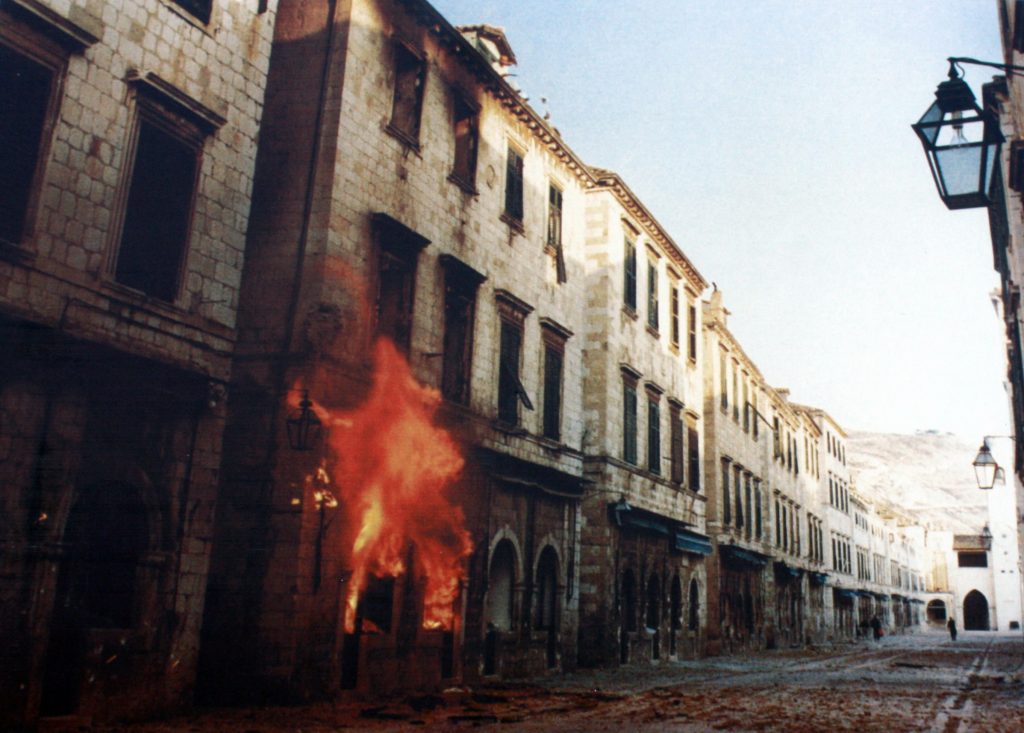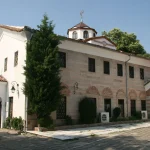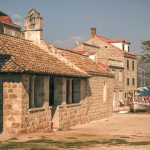What do you think of when you think about the 90’s? Maybe you think of the then mobile phone giant Nokia and the phones that could break concrete if dropped, or Haddaway’s eternal question about what love is. For many it was a happy time, a time of good music, technological advancement and anticipation of the turn of a brand new century. For others, it was a time of fear, death, oppression and destruction, and for those of us who come from Europe, it was shocking to see such a thing occurring on our doorstep – once again.
The Serbs and their hangers on, the Montenegrins, pressed on with their imperialistic style regime through unfathomable attempts at mass murder, butchering innocent civilians in Srebrenica, in Vukovar, in Skabrnja. Children killed, women raped, men slaughtered and buried in pits, given no more dignity than diseased livestock. Europe had not seen such bloodshed and brutality since Adolf Hitler and his army of black-shirts had reigned. For most people from outside of the former Yugoslavia, the reasons for Serbian aggression were shrouded in mystery, for many, they still are.
It’s known to most that both Croatia and neighbouring Slovenia declared their independence from Yugoslavia (SFRJ) in 1991 following numerous attempts at gaining political distance and finally through a referendum. The formerly Socialist Republic of Croatia became the Republic of Croatia, an independent state of its very own after what seemed to many like an eternity under a cruel and unyielding Yugoslav thumb. That was about as much as those lucky enough not to be involved knew about the situation which led to the above.
On the 6th December 1991, Dubrovnik was viciously attacked by the JNA (Yugoslav Peoples Army), it was the culmination of a siege which sought to raze the globally adored UNESCO World Heritage Site to the ground. A similar and unfortunately successful action was seen much more recently in Palmyra at the hands of ISIS. The horrific bombardment of Dubrovnik resulted in international condemnation of the JNA and rightly became a public relations disaster for Serbia and Montenegro, contributing to and furthering their diplomatic and economic isolation and winning them powerful enemies across Europe and the rest of the world. It was a shot in the foot from which the still-estranged Serbia has hardly ever recovered in the eyes of the international community, and rightly so.
To go into it a little more deeply, the JNA was composed primarily of Serbian nationals, and it was no accident that they targeted a location which had been totally demilitarised back in the 1970’s to try to prevent it from ever becoming a war casualty. The JNA’s barbaric attack on the beloved UNESCO city of Dubrovnik was met with international condemnation and political outcry, resulting in the aforementioned isolation of Serbia. Threats to Serbia from numerous powerful European politicians echoed around the globe, the British prime minister Margaret Thatcher famously stood defiantly by Croatia, claiming publicly that had it been up to her, she would have bombed Belgrade immediately.
The attack lasted seven long months, the heaviest attack took place on this day, the 6th of December (now celebrated as the Day of the Defenders in Dubrovnik), killing 19 people and wounding another 60. Artillery attacks on Dubrovnik damaged 56% of its buildings, and the Old City was the innocent victim of 650 shells. Neighbouring Montenegro grew ever hostile, led by President Momir Bulatovic and Prime Minister Milo Djukanovic who rose to power following the popular anti-bureaucratic revolution, the nation was allied to the fanatical Slobodan Milosevic in Serbia. It was declared that Dubrovnik would not remain in Croatia, with both of these nations who have since failed miserably in comparison to Croatia falsely claiming that it had never been a part of Croatia at all. The war ended with Croatian victory, earned with blood, with the siege lifted in May 1992. The Croatian Army liberated Dubrovnik and its surroundings, but the danger of sudden attacks from the internationally villified JNA remained a threat for a further three years.
The cruel and unjustified siege and naval blockade by the JNA and the Yugoslav Navy resulted in the direct deaths of between 82 and 88 civilians and 194 Croatian military personnel. By the end of the bloody year of 1992, when the entire region was recaptured by the HV, 417 Croatian Army (HV) troops were dead. Approximately 19,000 refugees were displaced. 11,425 buildings suffered varying degrees of damage, numerous homes, businesses, and public buildings were torched and property was looted by the JNA and their Montenegrin counterparts. In 2000, Montenegrin President Milo Djukanovic apologised for his country’s part in this utterly devastating attack, prompting anger from his political rivals and feelings of betrayal from the still very much isolated and globally condemned, small nation of Serbia.
Today, Dubrovnik is known across the world as an enviably successful tourism giant which has to do very little but lie on its laurels. A far cry now from a war zone without running water and electricity, outside of the summer months, the Pearl of the Adriatic sits relatively silenty in its peace, with only mere calls of seagulls and anchors of ships cutting through that hard-earned silence. It has won many titles since that awful day, and gained many nicknames, from the fictional Kings Landing and Naboo, to the non-fictional Pearl of the Adriatic. A lifetime has passed since those dark says, and the costly mask the city so perfectly wears would never reveal its wounds, its pain or its suffering to the untrained and naive eye.
Following the war, damage was repaired adhering to UNESCO guidelines between 1995 and 1999. The ICTY (International Criminal Tribunal for the former Yugoslavia) issued indictments for the JNA Generals and officers involved in the disgraceful siege of Dubrovnik, with the architect of the attack, General Pavle Strugar sentenced for his role. Strugar passed away in 2018, and while one shouldn’t speak ill of the dead, it doesn’t seem appropriate to hope his rest is a peaceful one.
For more on Croatian history, keep up with our dedicated lifestyle section.












